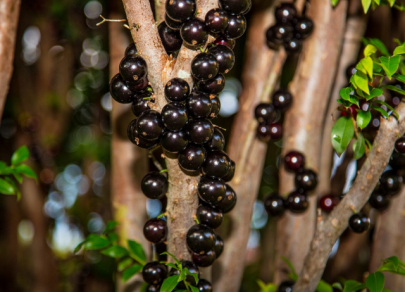FX.co ★ Seven most unusual fruits on planet
Seven most unusual fruits on planet
Jabuticaba
Jabuticaba is a rare fruit from Brazil that looks as if the berries are growing straight out of the tree’s bark. Shiny black grape-sized fruits densely cover the trunk and large branches. Inside, the flesh is juicy and sweet-tart, with hints of lychee and grape. Jabuticaba primarily grows in southern Brazil, where it is used to make jams, wines, and liqueurs. The fruit also has medicinal applications as its tannins and antioxidants help fight inflammation and signs of aging.

Fingered Citron
Better known as Buddha’s Hand, this curious fruit has elongated segments resembling fingers. It contains almost no pulp but has a bright, clean lemon aroma without the bitterness. Grown in India, China, and Japan, it is often used in rituals and to fragrance rooms. Buddha’s Hand is prized for its high content of essential oils—its peel is candied, added to infusions, and used as a natural scent to uplift mood and relieve anxiety.

Akebia
Akebia is a rare fruit native to Japan, China, and Korea. Shaped like an elongated, purple pod, it splits open to reveal a jelly-like, pale interior full of black seeds. The flavor is delicate and sweet, with subtle hints of coconut and melon. But akebia is not just about taste—its thick skin is cooked like a vegetable: fried, stewed, or stuffed. In traditional medicine, the plant is valued for its anti-inflammatory and toning properties. Dried stems are brewed into teas and infusions to treat colds and digestive issues.

Pandan
Pandan is a fruit from the tropical regions of Southeast Asia and Oceania. It resembles an elongated pinecone with bright orange or red segments. Its flesh is dense and fibrous, with a pronounced aroma reminiscent of vanilla, nuts, and freshly cut grass. The flavor ranges from sweet to slightly soapy, depending on the variety. Pandan fruits are eaten boiled, dried, or ground into paste. In traditional medicine, it is used as an antiseptic and a remedy for digestive disorders.

Ackee
Ackee is considered a symbol of Jamaican cuisine and culture. The fruit resembles a red pear, which opens upon ripening to reveal three shiny black seeds surrounded by soft, creamy flesh. Its taste is mild and nutty, often compared to scrambled eggs. Ackee must be eaten only when fully opened—unripe fruits are toxic. It is commonly cooked with vegetables, fish, and spices. Ackee is rich in plant-based protein and healthy fats, making it valuable not only in cooking but also in treating gastrointestinal issues.

Feronia limonia
Feronia limonia, also known as wood apple, comes from India and Sri Lanka. It has a tough, almost wooden shell and greyish-brown pulp inside. The grapefruit-sized fruit emits a strong aroma that blends tamarind and spices. The taste is tangy and sweet-sour, with an astringent finish. The pulp is eaten fresh, added to refreshing drinks, or used in sweet chutneys. In Ayurveda, wood apple is used as an antimicrobial and strengthening agent for stomach disorders. Its tannins also make it a natural antiseptic.

Jatoba
Jatoba is the fruit of tropical trees found in South and Central America. It looks like an elongated dark brown pod with a tough, almost wooden shell. Inside is dryish yellow pulp with a distinct sweet, woody flavor and a light musky aroma. Jatoba is eaten fresh or added to porridges and beverages. Locals prize the fruit for its valuable minerals—calcium and iron—and for its tonic effect on the body. In folk medicine, both the fruit and the bark are used to treat coughs, fatigue, and inflammation.






















